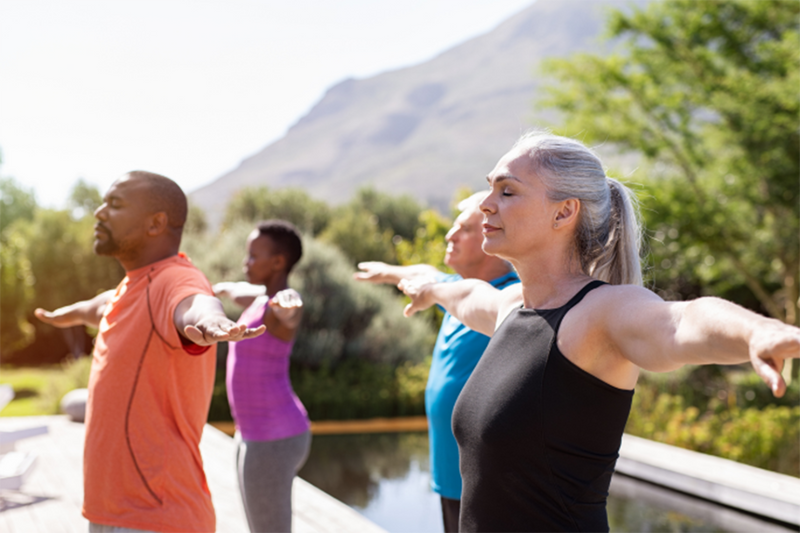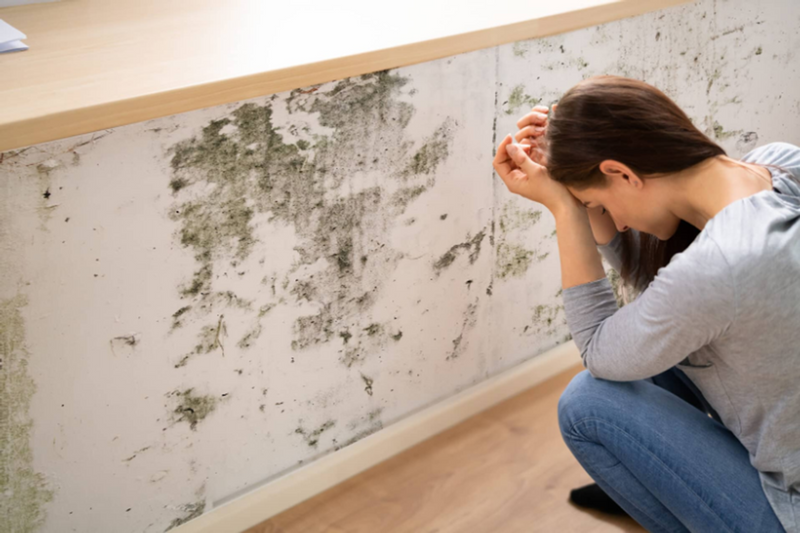Disasters don’t wait for the perfect moment – they hit hard and fast.
Heatwaves, winter storms, contaminated tap water, even blackouts that trigger silent carbon monoxide threats, these aren’t rare events anymore. They're becoming more common, more intense, and far more dangerous. Still, many households aren’t ready when a crisis strikes.
The reality is changing fast. According to the CDC and EPA, climate-related emergencies are happening more often, and they’re becoming more dangerous.
Since 1999, heat-related deaths in the U.S. have jumped 117%. Carbon monoxide poisoning during blackouts has surged. Even areas once thought “safe” from winter storms are now facing severe cold. And in flood zones, mold-related illnesses are rising sharply.
If that all feels overwhelming, you’re not alone. But being prepared doesn’t have to mean being afraid. This guide was created to give you peace of mind. With practical steps, real-life examples, and evidence-based advice, it will help you build the confidence and readiness to protect yourself and your loved ones, no matter what comes your way.
Surviving Extreme Heat and Protecting Your Health During Dangerous Temperatures and Prolonged Heatwaves
Extreme heat is now the deadliest weather-related hazard in the United States.
In 2023 alone, thousands of Americans were hospitalized or died from heat-related illnesses—many of them preventable. The CDC reports that over 1,600 deaths in 2023 were directly linked to extreme heat, with urban heat islands and poor indoor cooling access compounding the risk.
High temperatures overwhelm the body’s natural ability to cool itself, especially when humidity is high. This can lead to heat exhaustion or even life-threatening heatstroke.
Older adults, children, outdoor workers, and people with chronic illness are particularly vulnerable. Prolonged exposure without proper cooling or hydration can quickly escalate into a medical emergency, which is why public health experts urge communities to have heat action plans and for individuals to understand the warning signs of heat-related illness.
Key Actions:
- Stay indoors between 10 AM and 4 PM during heatwaves.
- Use air conditioning or visit a designated cooling center.
- Drink water consistently – don’t wait to feel thirsty.
- Wear light, loose-fitting clothing and use sunscreen.
- Learn to recognize symptoms: dizziness, confusion, heavy sweating.
-
Never leave children, pets, or elderly individuals in parked cars.
Staying Safe in Winter Storms and Freezing Temperatures When Conditions Turn Dangerous

Cold weather is deceptively dangerous. Hypothermia, frostbite, and accidents from ice-related falls send thousands to emergency rooms each year. Many cases result from power outages that disable heating systems or stranded vehicles during snowstorms.
Hypothermia can set in when body temperature drops below 95°F, and frostbite can cause permanent tissue damage. Homes without adequate insulation, faulty heating, or limited backup supplies become hazardous in freezing weather. Winter preparedness is about staying warm, dry, and aware.
In extreme cases, individuals caught outdoors during a storm can experience rapid temperature loss, especially if wet.
Homeowners may resort to unsafe heating methods like gas ovens or charcoal grills, increasing the risk of carbon monoxide poisoning. Therefore, winter preparedness includes a reliable backup heat source, a winterized home, and a clear understanding of when and how to seek help.
Key Actions:
- Dress in layers: base (moisture-wicking), insulating, and waterproof outerwear.
- Prepare homes: insulate pipes, seal windows, and service heating systems.
- Keep an emergency kit in your vehicle (blankets, food, flashlight, shovel).
- Avoid alcohol when outdoors – it increases heat loss.
- Recognize hypothermia symptoms: confusion, slow speech, shivering.
-
Never heat your home with an oven or outdoor grill.
Dealing with Flooding and Mold Contamination After Storms and Water Damage

Flooding can happen in minutes, but the health risks often last for months.
Contaminated water may carry sewage, bacteria like E. coli, industrial runoff, and dangerous debris. Post-flood mold growth is another major threat, exposure can trigger asthma, allergic reactions, and serious infections in vulnerable individuals.
According to a 2024 Environmental Health study, mold exposure after home flooding increased respiratory symptoms by over 300% in children and seniors.
Cleanup must be done carefully, and some materials, like carpets, drywall, and insulation, often need to be thrown out. Mold can continue to grow for weeks or months if the source of moisture isn’t fully eliminated, making ventilation and humidity control essential parts of the cleanup strategy.
Key Actions:
- Wait for local clearance before reentering flooded structures.
- Use PPE: N95 masks, rubber gloves, goggles, and boots.
- Ventilate the area for at least 30 minutes before cleanup.
- Remove and discard porous materials (carpets, insulation, mattresses).
- Clean hard surfaces with soap and water, then disinfect with bleach (1 cup/gallon).
-
Keep indoor humidity below 50% with fans or dehumidifiers.
Ensuring Food and Water Safety During Power Outages and Natural Disasters

Power outages and water disruptions often accompany disasters. Without refrigeration or clean water, the risk of foodborne illness and gastrointestinal infections spikes.
The CDC warns that bacteria like Salmonella, Listeria, and Norovirus can spread quickly in these conditions, particularly through spoiled foods and untreated water.
Infants and immunocompromised people are most at risk. In flood zones, even sealed containers must be inspected, and infant formula must be mixed with safe, boiled water.
Sanitation also matters, dirty utensils or hands can contaminate otherwise safe food. Understanding what foods to keep, what to throw out, and how to safely prepare water makes a major difference in maintaining health during a crisis.
Key Actions:
- Discard perishable food after 4 hours without refrigeration.
- Check canned goods for rust, swelling, or dents – discard if compromised.
- Boil water for 1 minute (or 3 minutes at high altitudes) before use.
- Use 8 drops of unscented bleach per gallon if boiling isn’t possible.
- Only use treated water for baby formula.
-
Sanitize cooking surfaces, utensils, and food containers after flood exposure.
Maintaining Hygiene and Sanitation When Infrastructure Fails or Resources Are Limited

Hand hygiene saves lives, especially in disaster situations where plumbing and sanitation may be disrupted. Outbreaks of gastrointestinal and respiratory illnesses often spike in shelters and storm-impacted zones due to poor hand hygiene and waste disposal.
Keeping hands, surfaces, and shared spaces clean isn’t just about comfort, it’s critical disease prevention. Public health experts stress the importance of soap, water, and disinfectants during and after any emergency event.
When restrooms, sinks, or clean water aren’t available, having backup supplies like alcohol-based hand sanitizer, wipes, and sanitation bags ensures your household stays healthy.
Key Actions:
- Wash hands before eating, after bathroom use, and after clean-up tasks.
- Use hand sanitizer (≥60% alcohol) when water is unavailable.
- Sanitize high-touch surfaces regularly (doorknobs, counters, toilet handles).
- Keep a sanitation kit with soap, moist wipes, trash bags, and gloves.
-
If plumbing is down, use lined waste buckets and dispose of waste safely.
Carbon Monoxide Poisoning Prevention in Power Outages and Emergency Heating Scenarios

When power goes out, the risk of carbon monoxide (CO) poisoning rises. CO is odorless, invisible, and deadly. It builds up when grills, portable generators, or gas stoves are used indoors or in poorly ventilated areas.
The CDC confirms that over 400 Americans die annually from CO poisoning, and more than 50,000 are treated in emergency departments.
The Consumer Product Safety Commission also reports that most CO-related deaths during disasters occur within the first 72 hours, often because people were unaware of the danger.
Using proper ventilation, understanding the risks of enclosed heating, and installing battery-operated detectors are non-negotiables for any household.
Key Actions:
- Run generators only outside, at least 20 feet from windows or doors.
- Never use grills, stoves, or cars for indoor heating.
- Install battery-powered or plug-in CO detectors on every level of your home.
- Replace batteries twice a year and test devices monthly.
-
If CO poisoning is suspected (headache, nausea, confusion), get fresh air immediately and call 911.
What to Include in a 72-Hour Emergency Kit for Home, Vehicle, and Evacuation Scenarios

A 72-hour emergency kit helps you survive the most critical days after a disaster, when utilities may be unavailable, roads may be blocked, and help may be delayed.
FEMA emphasizes that personalizing your kit is just as important as stocking it, including medications, baby formula, pet food, or mobility aids as needed.
Rotate items every 6 months, review expiration dates, and keep your kit in an accessible location. Every person in the household should know where it is and how to use the contents.
A good kit covers food, water, shelter, health, light, and communication – core needs that allow you to manage unexpected conditions without outside help.
Key Actions:
- Water: 1 gallon per person per day (3-day minimum).
- Non-perishable food: canned goods, protein bars, peanut butter.
- Flashlight, extra batteries, and a hand-crank radio.
- First-aid kit, prescription medications, and spare eyeglasses.
- Soap, sanitizer, wipes, toothbrush, and menstrual supplies.
- Copies of IDs, insurance, and medical records (digital and paper).
- Extra clothes, blankets, and weather-specific gear.
-
Pet supplies, baby items, and mobility tools if needed.
Why Disaster Readiness Is a Responsibility, Not an Option in Today’s Unpredictable World

Disasters can turn your daily routine upside down in seconds. But the steps you take today – building an emergency kit, knowing the symptoms of heatstroke, or understanding how to disinfect flood water, can prevent tragedy tomorrow.
Being prepared doesn’t mean being paranoid. It means being ready to protect your family, help your neighbors, and stay calm under pressure. It’s the difference between waiting for help and becoming part of the solution.
You don’t need to do everything overnight. Start with one action today: build your kit, test your CO detector, or print this guide and tape it inside your pantry. Every small step builds real-world resilience.
And when the next disaster comes, you’ll be ready.
















